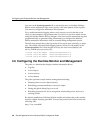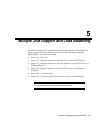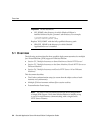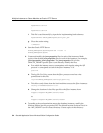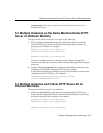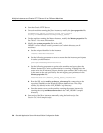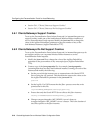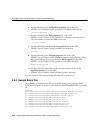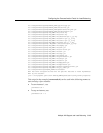
Multiple Instances on Same Machine as Oracle HTTP Server
5-6 Oracle9i Application Server Wireless Edition Configuration Guide
Table 5–1 Property File Settings
5.
Start each of the JServ instances manually after the Oracle HTTP Server is
started. Create a batch script to supply all the classes specified in the
Property File Setting
\admin\AsynchNotification.properties server.listen.port=5500x
\core\admin\AsynchRequest.properties server.listen.port=6500x
\core\admin\Ftp.properties ftp.server.port=910x
\core\admin\Notification.properties sms.server.port=5000x
\core\admin\Rmi.properties rmi.server.port=201x
The port number on which the RMI server runs.
\probe\www-server.properties port=809x
\magent\config\MAgent.properties magent.server.port=201x
Same as rmi.server.port in Rmi.properties.
\spatial\spatial.properties Change path to class files to reflect the per
instance classes.
\Master\Master.properties Modify the db.connect parameter in this file to be
the same as that in System.properties.
Modify only the Master.properties file in the
classpath of the master instance.
ptgInstances.length=N
ptgInstance1.rmi.host=localhost
ptgInstance1.rmi.port=2011 (This is the value of
rmi.server.port in the Rmi.properties file.)
ptgInstance1.rmi.objectName=CacheSyncClient
(Do not change CacheSyncClient to any other
value.)
ptgInstance2.rmi.host=localhost
ptgInstance2.rmi.port=2012
ptgInstance2.rmi.objectName=CacheSyncClient
ptgInstanceN.rmi.host=localhost
ptgInstanceN.rmi.port=201N
ptgInstanceN.rmi.objectName=CacheSyncClient



